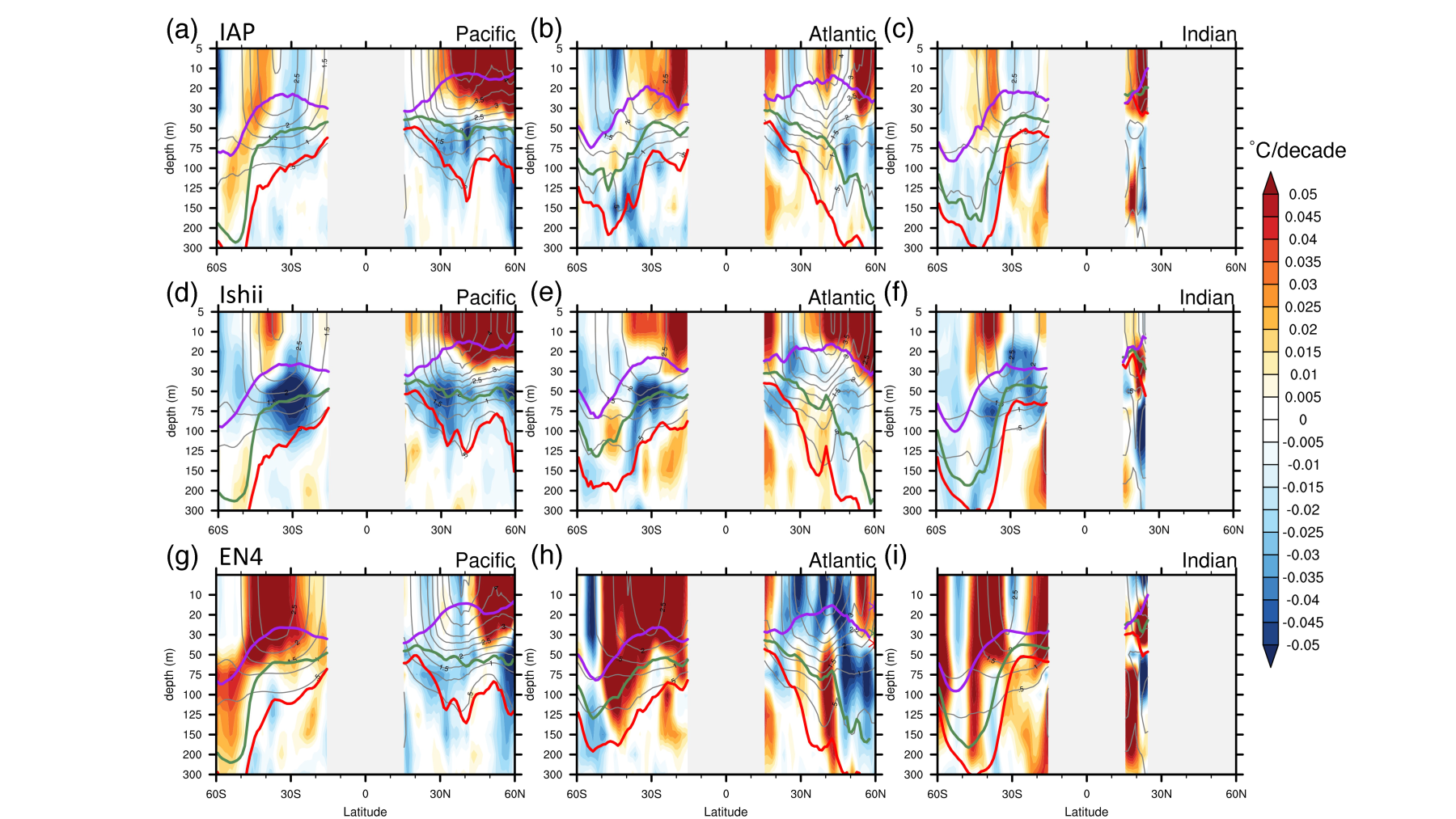Enhanced and weakened annual cycle in the vertical fingerprint of ocean temperature
The seasonal cycle is a fundamental feature of our climate. It has profound impacts on our societies, economies, and ecosystems. There is growing evidence that human activities are now influencing key aspects of the annual cycle of atmospheric temperature and surface temperature. In Shi et al. (2025), the authors use observations and state-of-the-art model simulations to further investigate the changes in the vertical structure of the ocean temperature annual cycle amplitude (TEMPAC) down to a depth of 300 meters. Utilizing a pattern-based detection and attribution approach, the authors demonstrate that the role of anthropogenic drivers overwhelms natural variability, and an identifiable anthropogenic “fingerprint” is present in TEMPAC changes from 1980 to 2014. This fingerprint is robustly identifiable across multiple observational datasets and model simulations of historical climate change.
Importantly, the vertical and basin-scale structure of TEMPAC changes is complex, with both enhancement and weakening of TEMPAC in specific layers and regions. The temporal evolution of signal-to-noise ratios (i.e., the size of anthropogenic effects relative to natural variability) in observations indicates an identifiable anthropogenic fingerprint in both surface and interior ocean annual temperature cycles. Key findings reveal significant increases in TEMPAC in the surface layer and summertime mixed layer, except in the Southern Ocean, and a weakening of TEMPAC within the subsurface ocean. In the surface layer, the amplification of the annual cycle is much stronger in the mid-latitudes of the Northern Hemisphere, which is linked to the shoaling of the mixed layer. The subsurface decrease mainly occurs below the annual mean mixed layer depth, associated with deep winter warming signals penetrating below the seasonal thermocline.
Human-caused greenhouse gas increases are the strongest but not the only driver of substantial changes in the annual cycle. The results of Shi et al. (2025) demonstrate that anthropogenic aerosols are also important, accounting for approximately one-third of the historical changes in the annual cycle.
Taken together with earlier work on tropospheric temperature (Santer et al. 2018) and sea surface temperature (Shi et al. 2024), the changes in the vertical and latitudinal structure of the ocean temperature cycle, as found in Shi et al. (2025), clearly indicate that anthropogenic impacts on the annual cycle are now detectable across the entire climate system, from the upper troposphere to the permanent ocean thermocline. These findings of significant changes in the seasonality of ocean temperature have potentially important implications for other biological and chemical properties of the ocean, such as the uptake of oxygen and CO2 by the world’s oceans.

Figure 1. Observed trends in zonal-mean TEMPAC over the period 1980-2022 for three different datasets and ocean basins: (a)-(c) trends from IAP, (d)-(f) trends from Ishii, (g)-(i) trends from EN4. Results are for the Pacific, Atlantic, and Indian Ocean basins (left, middle, and right columns, respectively). The gray contours are climatological TEMPAC values over 1980-2022 for the corresponding basin and dataset. Purple, green, and red curves show the summertime (Jul-Aug-Sep mean for the NH or Jan-Feb-Mar mean for the Southern Hemisphere), annual mean, and wintertime mixed-layer depth (MLD), respectively, averaged over the analysis period.
Annual Cycle Changes in the Vertical Structure of Ocean Temperature: A Fingerprint of Human Influence on Climate (Journal of Climate)
Topics
- Modeling
- Ocean Heat
- Climate Change
